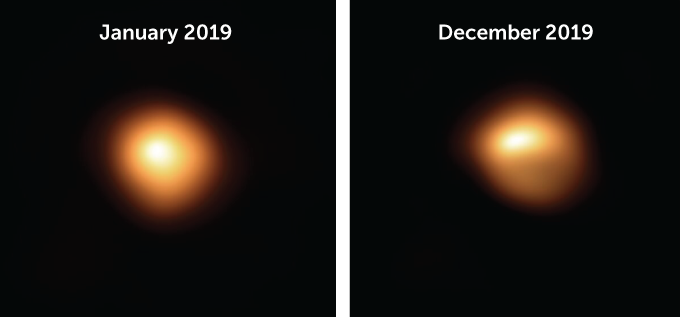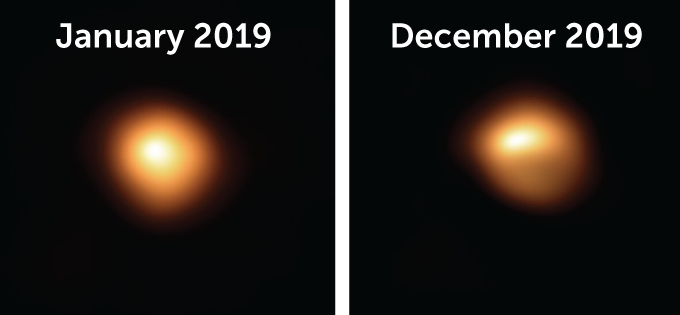The star Betelgeuse might just be dusty, not about to explode – Science News
Betelgeuse, one of the brightest stars in the sky, suddenly faded in late 2019, startling astronomers and prompting speculation that the star was about to explode.
But by the end of February, Betelgeuse had started to brighten again, quashing rumors of its demise. Now a study suggests that the dimming was due to dust recently shed by the star.
“I think some people wanted this to be seen as the death throes of the star, and it’s very much not,” says astrophysicist Emily Levesque of the University of Washington in Seattle.
Betelgeuse, a type of massive, elderly star called a red supergiant, lies about 700 light-years away from Earth and marks the shoulder of the constellation Orion. Astronomers have known for decades that, someday soon, the star is going to run out of fuel and detonate in a brilliant supernova (SN: 2/8/17).
So when the star began dimming in October 2019, astronomers took notice. By December 23, it had slipped from the sixth or seventh brightest star in the sky to the 21st. That didn’t necessarily mean an explosion was imminent, but any strange behavior in a red supergiant is worth watching, Levesque says.
“When people think about stars that are visible in our sky that could explode soon, Betelgeuse is near the top of the list,” she says. “So when people said this star is doing something weird, it caught people’s attention.”
Levesque and astronomer Philip Massey of the Lowell Observatory in Flagstaff, Ariz., decided to investigate more mundane possibilities than an imminent supernova that could explain the dimming. Those options include the star’s surface cooling off suddenly, as boiling blobs of plasma rise and sink within it (SN: 1/29/20), or a cloud of dust recently puffing off the star, temporarily obscuring starlight and making Betelgeuse appear dimmer than it really is.
The pair observed the star on February 14 — when it was nearly at its dimmest — looking for signs of titanium oxide molecules in the star’s outer layers, a clue to its temperature. Comparing those observations with similar ones that Levesque had taken in 2004 showed that the temperature had dropped by about a measly 25 degrees Celsius.


“To our surprise, Betelgeuse didn’t look that different,” Levesque says. “The temperature couldn’t explain how much dimmer Betelgeuse had gotten in the last few months.”
That leaves the dust explanation, the scientists report in a study to appear in the Astrophysical Journal Letters. “It’s partly process of elimination,” Levesque says. Red supergiants like Betelgeuse are known to puff out clouds of gas which condense into dust. And the star did dim uniformly over all wavelengths of light that Levesque measured, which supports the idea that dust from the star is to blame. By contrast, dust that lies in the spaces between stars would block certain wavelengths of light more than others.
The study “is a first step to a better understanding of what is happening to Betelgeuse,” says astrophysicist Miguel Montargès of KU Leuven in Belgium, who wasn’t involved in the research.
Montargès and colleagues have observed Betelgeuse with the Very Large Telescope in Chile. The star looked markedly dimmer in December 2019 than it did when the telescope observed it in January 2019, before the fade-out began. But the dimming seemed to appear only in the star’s southern hemisphere, not uniformly across Betelgeuse, according to an image the team released February 14. That could be explained by an asymmetrical dust cloud, although the situation may be more complicated. Montargès plans to observe Betelgeuse again the week of March 16 and publish the results later this year.
If the dimming is due to dust, that will give astronomers an opportunity to watch a nearby star losing mass in real time. “There’s that famous quote, we are stardust,” Montargès says, paraphrasing a line spoken by the late astrophysicist Carl Sagan. “Perhaps the atoms we are looking at will one day be part of a planet, and perhaps sentient beings. That’s why it’s really exciting.”
Other astronomers are holding out for more information. “The dust model is viable, but it also doesn’t rule out changes in the star itself,” says astronomer Edward Guinan of Villanova University in Pennsylvania, who has also been observing Betelgeuse since the fall. Betelgeuse naturally dims and brightens on a 420-day cycle, and although the dimming is not usually this extreme, it could still be nothing out of the ordinary. “I think the jury is still out.”






